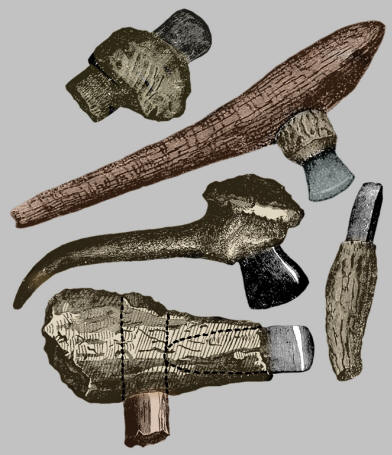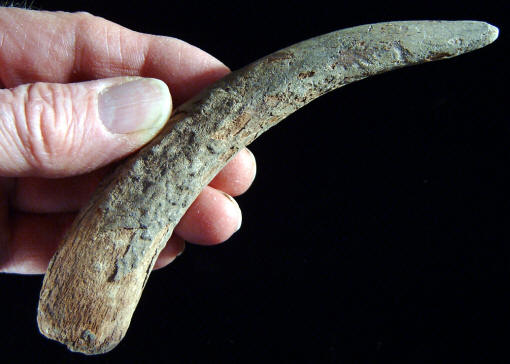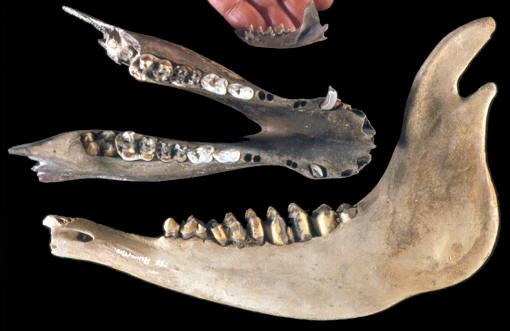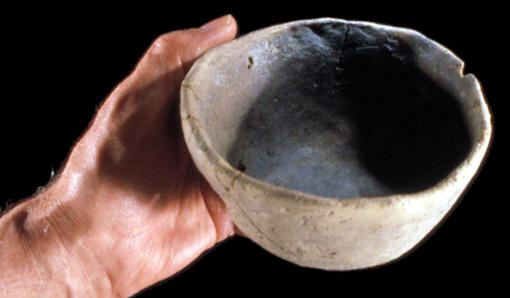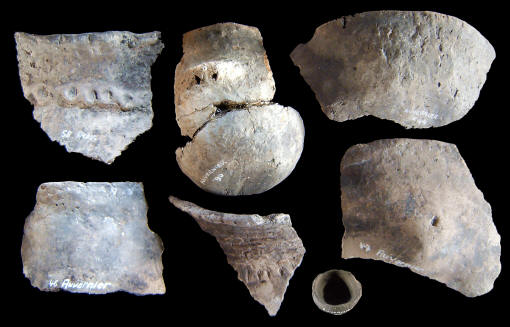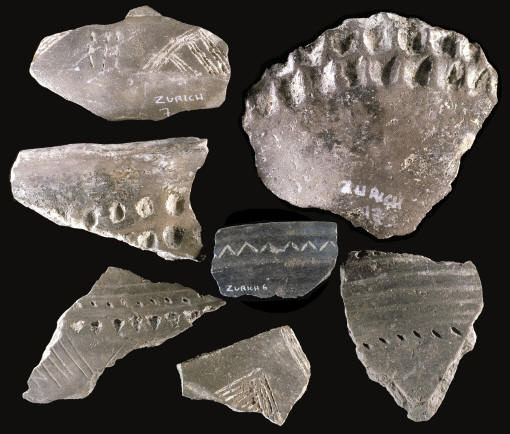|
|
|
Lake sites dating from the Neolithic to the Early Bronze Age produced triangular and stemmed arrow points. Desor describes them in 1872: "The arrows are triangular, frequently provided with barbs, which rendered them more formidable. Traces are sometimes observed of the cement which united them to the stock. There were also points of arrows of bone, but these are much rarer; the museum of Neuchatel posses one from Concise of very peculiar form; others were fitted to the stick and secured by means of pitch. In the specimen annexed (pictured) may be distinguished the impression of the stick and the thread which fastened it; others still are serrated, or furnished with a small lateral hook, similar to a diminutive harpoon." He also reports that the bows were made of yew and that they had found them in good preservation. |
|
|
|
|
Sickle blades represent another common tool type that was in use during the Neolithic period. Neolithic lake dwelling people were using sickle blades to cut plants such as wheat. A specific type of wheat known as "lake-dwelling wheat" (Triticum durum/turgidum) had spread throughout the Alpine region by around 5500 B.C. Sickle blades were hafted onto handles. Several of the handles that have been found were made of beech wood. The blades were held in place with pine pitch. |
|
|
Another common tool found on lake sites are celts (ungrooved axes) and the antler sockets they were fitted into. The celts are rarely found together with the socket. Even more rarely have completely assembled axes been found with the celt, antler socket and wood handle. Small celts were also fitted into antler sockets and used as chisels. |
|
|
|
|
Antler sockets, also called sleeves, were made from collected shed red deer antler rather than from hunted deer. The sleeves were intensively used during the Neolithic lake dwelling period. They are considered a technological advancement in which they were used to absorb shock and protect the blade and the handle. The sleeves came into use around 6,000 years ago. They became critically important from around 3600 BC onward. |
|
|
Lake dweller sites have provided archaeologists with some of the most fragile food products for study. These sites have produced specimens of corn, wheat, barley, water-chestnuts, dried apples, beech-nuts, acorns, the seeds of raspberries, strawberries, elderberries and blackberries. Even balls of string or twine have been found perfectly preserved. |
|
|
The lake dweller sites of Switzerland have provided a unique opportunity to observe stone tool hafting techniques and many other areas of study. No other group of ancient sites in the world have such an extraordinary system of organic preservation or has produced so many unique artifacts for study as the lake dwelling sites of Switzerland. |
|
|
"REFERENCES"
1866,
Keller, Ferdinand, "The Lake Dwellings Of Switzerland And Other
Parts Of Europe," p. 9, 153-155. |
|
